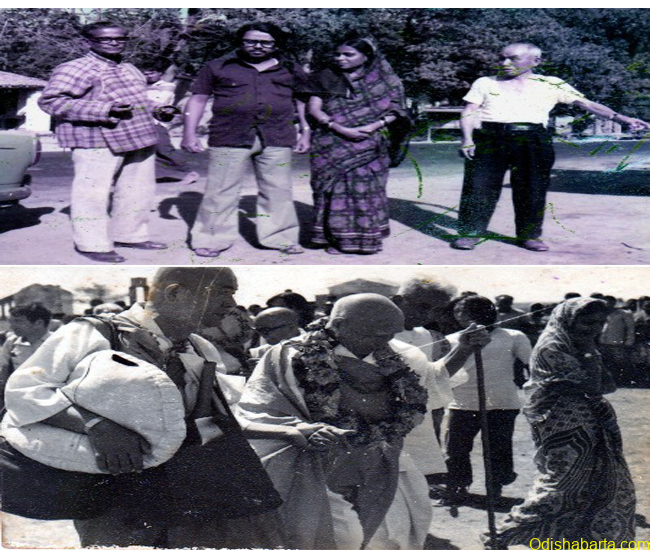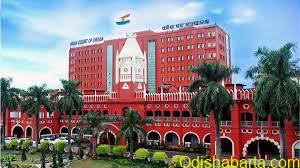DHAULI SHANTI STUPA CELEBRATES GOLDEN JUBILEE

By PRASANTA PATNAIK



My association with Dhauli project was since the first visit if Fujii Guruji , President of Japan Buddha Sangha or Nipponzan Myhoji in November 1970 and the Stupa was inaugurated by him in 1972 fifty years ago .

Guruji had visited Dhauli Hills at the invitation of the then Governor of Bihar shri Nityananda Kanungo and Padmashree Upendra Maharathi who was an ardent disciple of Guruji.
During a visit to Dhauli hills, Dr. Gouri Kumar Brahma who was holding a high position in the state tourism department narrated the importance of Dhauli and Ashokan inscription, etc. He elaborately described how Ashok the great was transformed from “Chandashok” to “Dharmashok” after witnessing bloodshed in the Kalinga War which was faught on the banks of river Daya.
Guruji was accompanied by Vikhu Rev. Shanti Suehei and sister Kastu. Guruju Fuji was deeply moved by the factual narration by Dr. Brahma and immediately announced to construct the second Viswa Shanti Stupa on the top of Dhauli Hills, Earlier Guruji had patronized for construction of Viswa Shanti stupa at Rajgir of Bihar.
Guruji suggested Shri Mahrathi to take the necessary steps in this regard. Soon a committee was formed in the name and style of Kalinga Nippon Buddha Sangh with Guruji as the chief patron and Shri Kanungo as the president. Mahathi was designated as the Secretary cum treasurer and Dr Radhanath Rath, the then editor of the most popular Odia daily the Samaj as the Joint Secretary. As I was working for the Kalinga daily of Biju Patnaik I was assigned to function as the liaison officer of the Sangh with a small honorarium of Rs 250.00 ( Rupees two hundred fifty only ) to cover the fuel cost of my scooter.
I was asked by Shri Kanungo to write letters to Revenue Department, then headed by Mr. Sudhansu Mohan Patnaik, I.A.S, to lease out land for the construction of the Stupa on the top of Dhauli hills and to write letters to Shri Mumtaz Ali, the then Chief Engineer, P.W.D, for construction of a road up to the proposed site of the stupa and also to write to Mr. S.N. Joshi, Superintendent Engineer of P.H.D. to provide water for the stupa. A letter was also written to provide electricity at the Stupa site.
During those days Mr Dayanidhi Patnaik was the Tahasildar of Bhubaneswar who was looking after the revenue matters, Mr. Mumtaz Ali, was the Chief Engineer, and Mr. Khitish Chndra Patnaik was the S.D.O, P.W.D, who were quite friendly to me. Mr. Joshi of P.H.D. was also closely known to me.
In the beginning, a small group of young Japanese monks had come to participate in the construction of the stupa. The design of the stupa was drawn by Dr. Minoru Ooka, Head of the Architecture Department of Tokyo University in consultation with Guruji and Shri Maharathi, who was then working with the Government of Bihar as the Director of Industries and Industrial Designs. He was a close childhood friend of my father and I used to call him Mausa.
Initially, the Japanese monks stayed in my premises in a bamboo cottage and shared food cooked by my wife Chandraprava, whom they were treating as a sister.
I had to visit Dhauli almost every day with Chndraprava to look after the work. In war footing, the Sadharma Vihar, or the prayer hall at the foot of the hills was completed and the constriction work of the stupa on the top of the hills started. Guruji joined fir Bhumi Puja along with a number of Japanese monks including Rev Hegaisan, President of Japanese Saevodaya Sangh, Rev. Ishiyama, Rev Okinawa, Rev Ikeda, Rev. Yoda, etc.
In the meanwhile, there was a need for procuring Buddha Images for the stupa and to decorate the stupa with stone carvings depicting Jatak Tales. The main Budhha statue was prepared by well-known stone carver Padmabibhysan Raghunath Maharana. To prepare murals and fix the stupa Chandraprava suggested visiting Puri and assigning the work to some expert stone carvers. I agreed with her proposal and went to Puri along with Rev, Ishiyama and Rev, Sugei to locate expert stone carvers and contacted my friend A. Laxmi Narayan Naidu who was working in S.C.S. College and was very popular in the city of lord Jagannath. Both Naidu and Chadraprava suggested contacting a few stone carvers in Kumuti Sahi with whom they were familiar.
Soon we contacted Sudarshan Sahu who was known to all of us. Sudarshan agreed to prepare the required images on Budha Jatak for the panel of the Stupa and proposed to pay him some advance amount as it was not possible on his part to invest in purchasing the required stone blocks. Finally, Sudarshan came to Dhauli with his team and prepared the panels for the stupa and in the process won the hearts of most of the Japanese monks who sponsored his trip to Japan with his family members.
In the meanwhile by dint of his hard labor Susarshan received a number of Awards from the State and Central Governments and was awarded one of the very high civilian awards Padma Bibhusan.
The bond between Sudarsan and my family became very strong and we virtually feel like members of one family.






